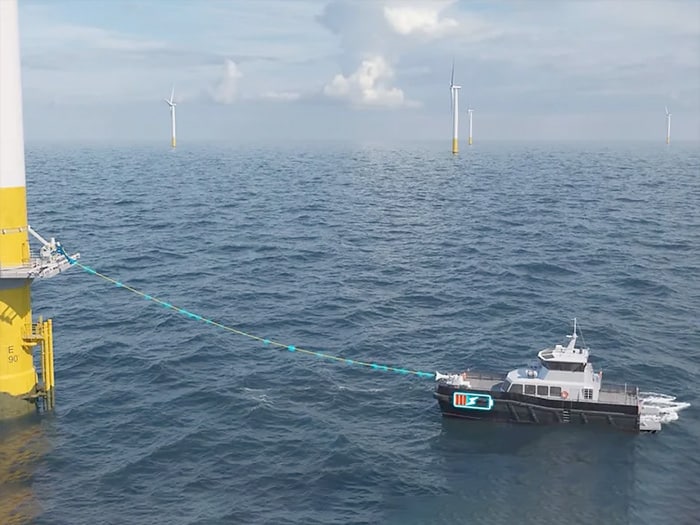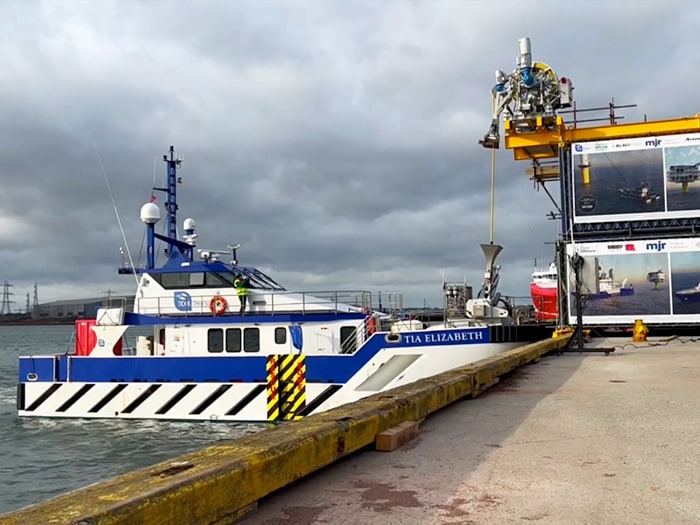
Path opens for offshore wind vessels to charge at turbines
Written by Nick Blenkey
After successful in-harbor trials, innovative offshore power and charging system will next be tested offshore. [Image:Blackfish Engineering]
Harbor trials of an innovative offshore charging system promise to open the way for battery-powered vessels to charge directly from offshore wind turbines or substations. This, in turn, could lead the way to increased electrification of offshore wind service vessels.
Held in the Port of Blyth, U.K., the trials of MJR Power and Automation’s platform mounted automated offshore power and charging system were carried out by MJR and its project partners Blackfish Engineering and Tidal Transit Limited using the Tidal Transit crew transfer vessel TIA Elizabeth.
The set-up at the port replicated the installation of the offshore power and charging system on an offshore wind turbine and/or substation, validating the safe connection, mooring, and charging of a battery bank installed on the CTV.

“With safety embedded throughout the system, all interconnection, mooring, automation, monitoring, and safety systems, including wireless communication and emergency disconnection, were vigorously tested and validated during the trails,” says MJR.
Designed to convert energy delivered directly from the offshore wind farm, the offshore power and charging system is designed to enable all heavy hybrid and electric crew transfer vessels and other offshore support vessels to connect in the field to a 100% green energy source generated directly by offshore wind turbines for the efficient, safe and reliable transfer of power.
It will also enable offshore power to be supplied to other support vessels allowing them to turn off their diesel generators while standing by, in the same way that they can connect to shore power.
“Our offshore power and charging system is a ground-breaking innovation set to revolutionize the marine sector and which has huge potential to enable the industry to seamlessly transition to electrically operated CTV fleets,” said MJR managing director Paul Cairns. “By providing a solution to power vessels and charge batteries in the field – primarily during periods when they would otherwise be idle – MJR’s offshore power and charging system will prove to be a key enabler for the large-scale deployment of eCTVs and larger electric hybrid vessels across the offshore sector.”
The project has received funding support from Innovate UK’s Clean Maritime Demonstration Competition.
“Put simply, if 50% of the U.K.’s CTV fleet converted to electric operation, this would eliminate approximately 131,100 tonnes of CO2 each year,” said Cairns. “These figures are staggering and highlight that such technology, and the adoption of it, will be pivotal in reducing emissions in the field and helping owners, operators and governments to achieve their net zero targets.
With successful harbour trials now complete, MJR will now demobilize the equipment and prepare for installation on an operational offshore wind farm substation in the North Sea.
In addition to charging CTVs, with a maximum charging time of two hours, MJR is also developing a similar system delivering higher powers for providing offshore power and charging for larger vessels, including service operations vessels (SOVs).




